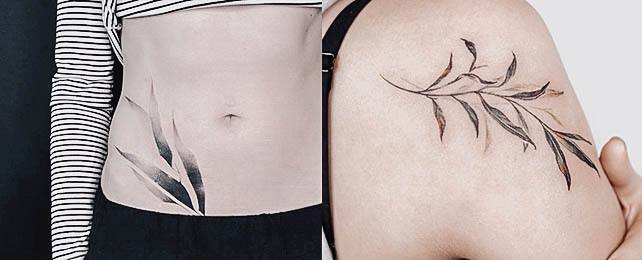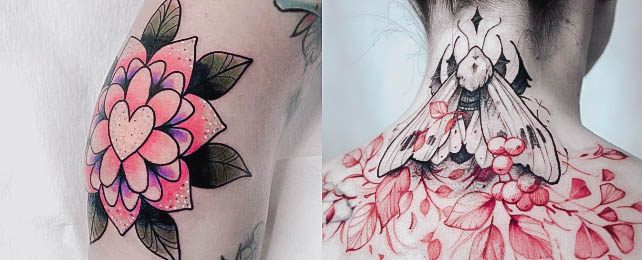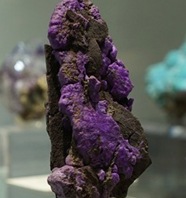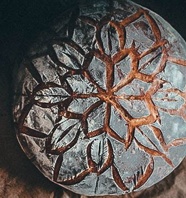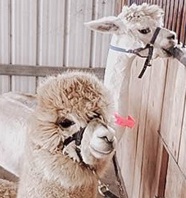We are warned of the consequences of getting too close, of reaching out in blind lust but who could blame us for ignoring the naysayers?
It is only human to desire, and downright divine when we receive.
Of course the other side to that sentiment is the pain that the thorn represents, as well as the willingness to surrender for something greater than one’s self. From the prick of the gardener’s finger to the crown of thorns worn by Jesus Christ, it would be a mistake to conflate thorns with unwilling sacrifice.
On the contrary, many believe that pain is a small price to pay for pleasure. Perhaps you count yourself among such souls?
A cluster of thorns or singular spike make for exquisitely symbolic tattoo art. Encircling the wrist or arm, studding a shoulder blade or cascading down your side, there is no denying the primitive potency of the thorn.
For the romantic at heart who refuse to give up on love, thorns recall the timeless tale of Sleeping Beauty and her prince, who braved his way through a forest of thorns to rescue her from her century-long sleep.
Those who believe in everlasting love are only too happy to face similar hardships and even shed a bit of blood in the name of winning one’s deepest desire.
Popular thorn tattoo design ides:
Plants with thorns worth considering: 1. Acacia: Acacia is a genus of shrubs and trees belonging to the subfamily Mimosoideae of the family Fabaceae, commonly known as the wattles or acacias. It is native to Africa, Madagascar, and the Middle East, and is also found in tropical and subtropical regions of Asia, Australia, and the Americas. Many species of Acacia have sharp thorns that can be up to 2 inches long.
2. Agave: Agave is a genus of monocots native to the hot and arid regions of Mexico and the southwestern United States. It is also known as century plant or maguey. Agave plants have sharp spines that can be up to 4 inches long.
3. Aloe: Aloe is a genus of succulent plants that are native to Africa, Madagascar, and the Arabian Peninsula. Aloe plants have sharp thorns that can be up to 1 inch long.
4. Bamboo: Bamboo is a group of woody perennial evergreen plants in the true grass family Poaceae. It is native to tropical and subtropical regions of Asia, Africa, and the Americas. Bamboo plants have sharp thorns that can be up to 1 inch long.
5. Berberis: Berberis is a genus of deciduous and evergreen shrubs native to temperate regions of Europe, Asia, North America, and South America. Berberis plants have sharp thorns that can be up to 1 inch long.
6. Cactus: Cactus is a group of succulent plants that are native to the Americas. Cactus plants have sharp spines that can be up to 4 inches long.
7. Crataegus: Crataegus is a genus of shrubs and trees belonging to the family Rosaceae, commonly known as hawthorns or thornapples. It is native to temperate regions of Europe, Asia, North America, and South America. Crataegus plants have sharp thorns that can be up to 2 inches long.
8. Euphorbia: Euphorbia is a genus of flowering plants belonging to the family Euphorbiaceae, commonly known as spurges or poinsettias. It is native to tropical and subtropical regions of Africa, Asia, Europe, and the Americas. Euphorbia plants have sharp thorns that can be up to 1 inch long.
9. Gleditsia: Gleditsia is a genus of deciduous trees belonging to the family Fabaceae, commonly known as honey locusts or thorn trees. It is native to temperate regions of North America and Eurasia. Gleditsia plants have sharp thorns that can be up to 2 inches long.
10. Lonicera: Lonicera is a genus of shrubs and vines belonging to the family Caprifoliaceae, commonly known as honeysuckles or twinberries. It is native to temperate regions of Europe, Asia, North America, and South America. Lonicera plants have sharp thorns that can be up to 1 inch long.
11. Opuntia: Opuntia is a genus of cacti belonging to the family Cactaceae, commonly known as prickly pears or nopales. It is native to tropical and subtropical regions of North America and South America. Opuntia plants have sharp spines that can be up to 4 inches long.
12. Rosa: Rosa is a genus of shrubs belonging to the family Rosaceae, commonly known as roses or rosebushes. It is native to temperate regions of Europe, Asia, North America, and South America. Rosa plants have sharp thorns that can be up to 2 inches long.

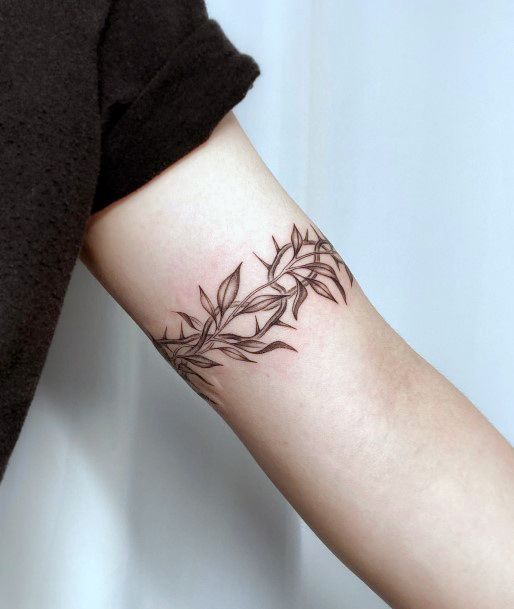


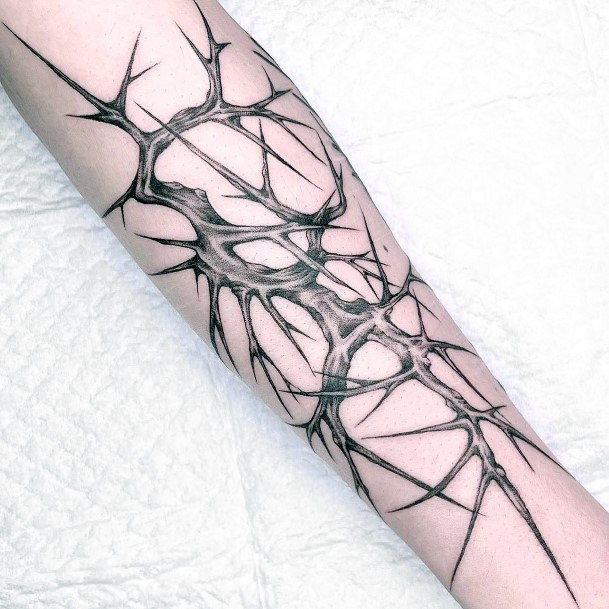
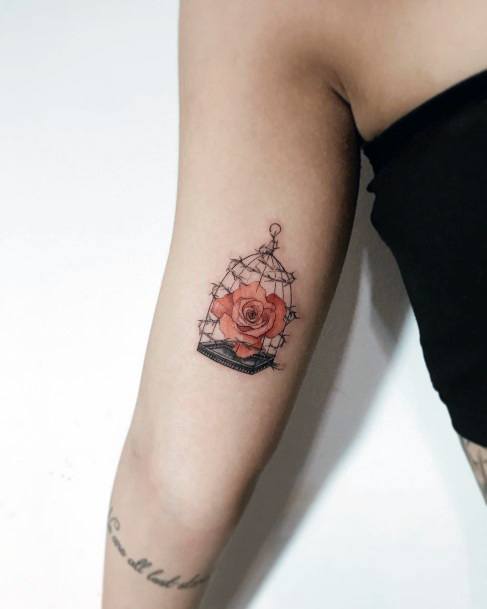


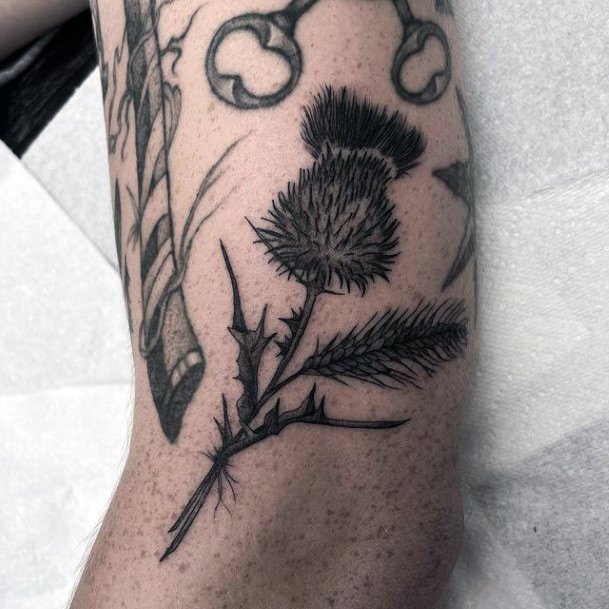

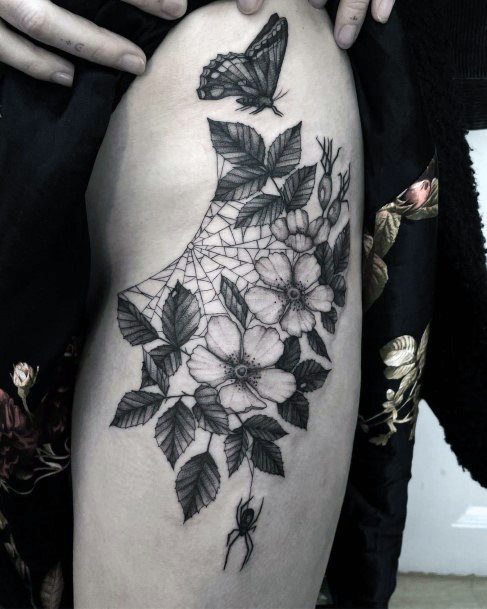
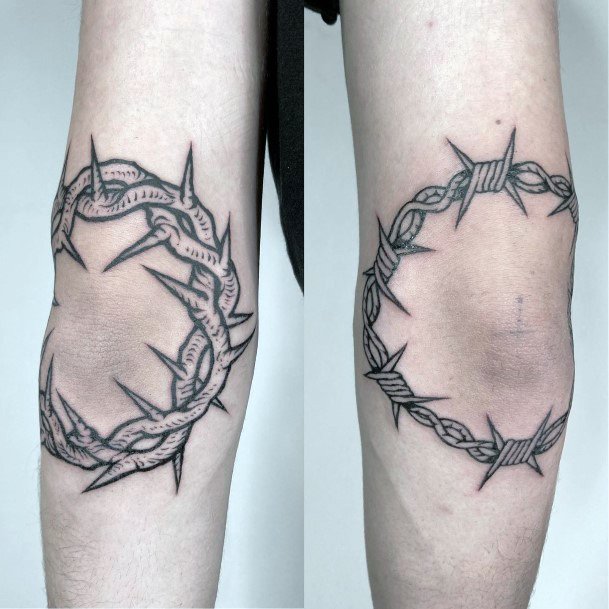




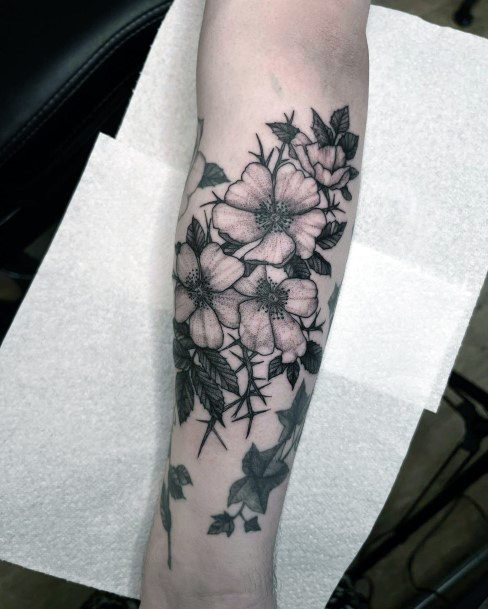
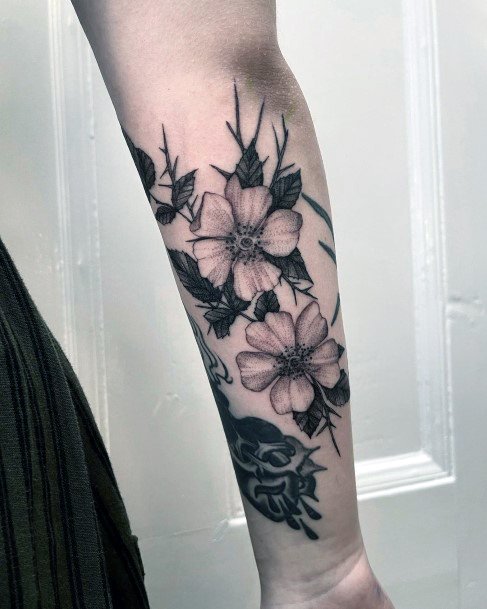


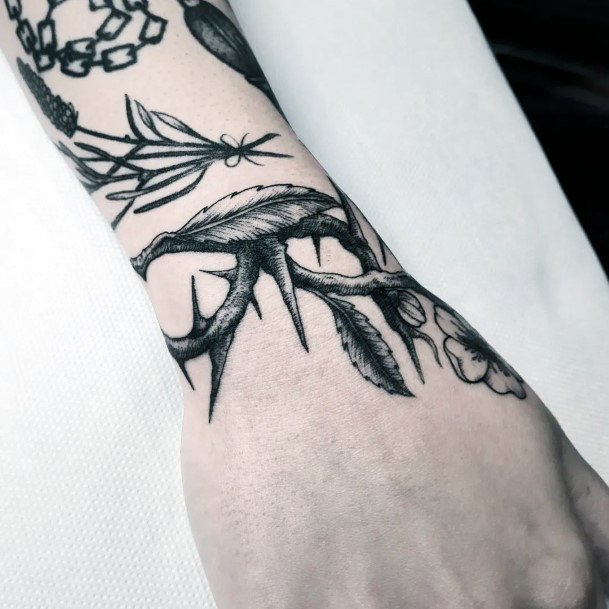


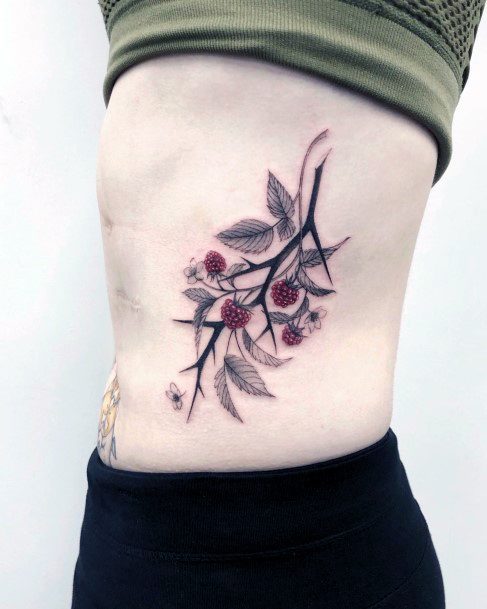





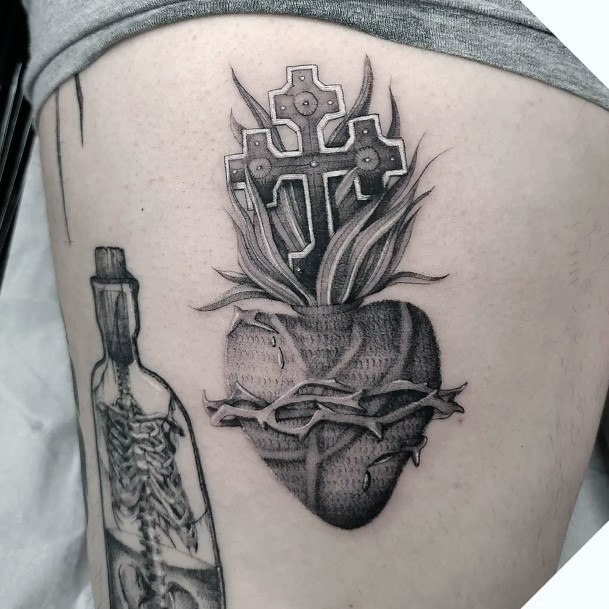






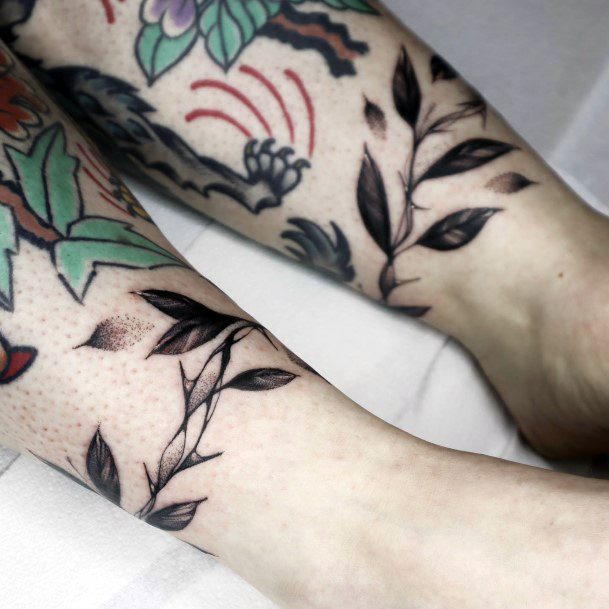
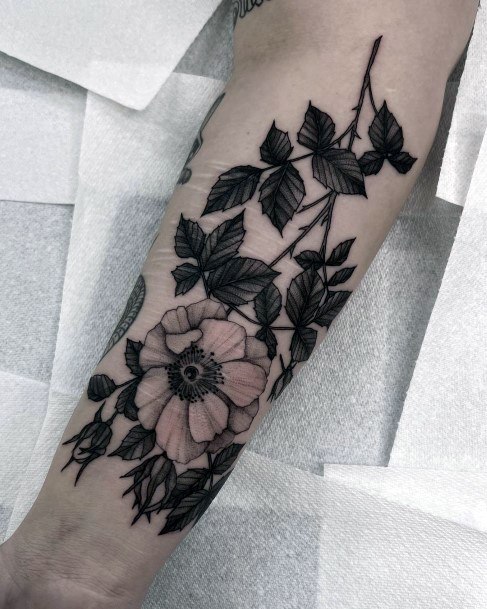
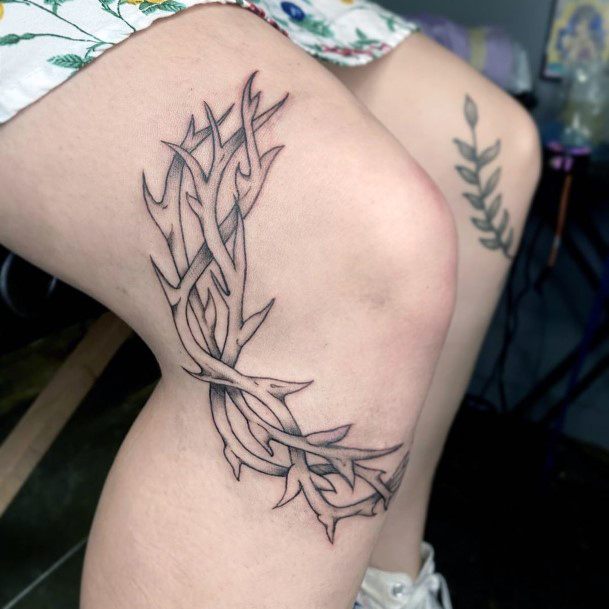




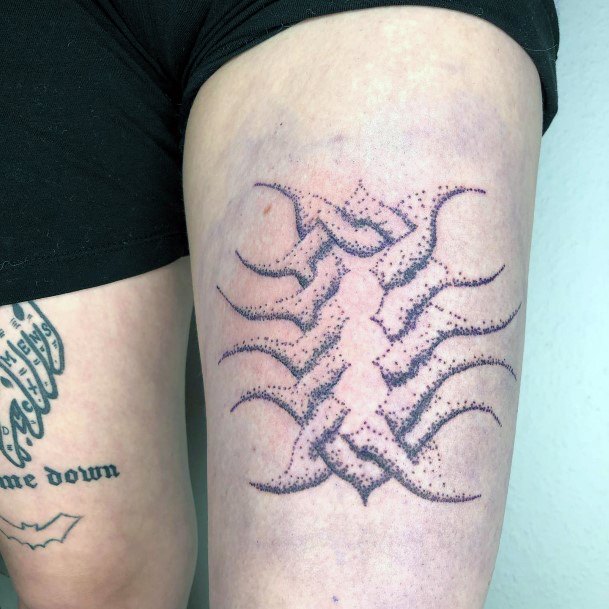



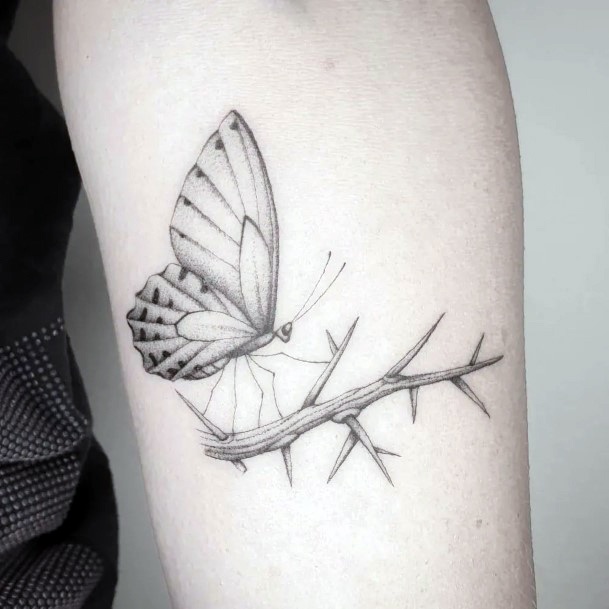






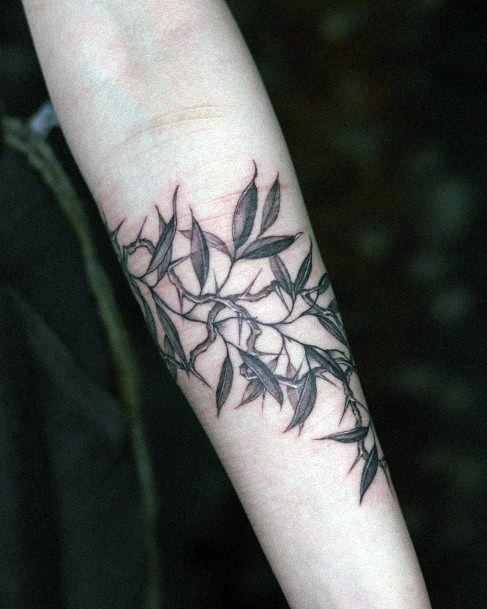







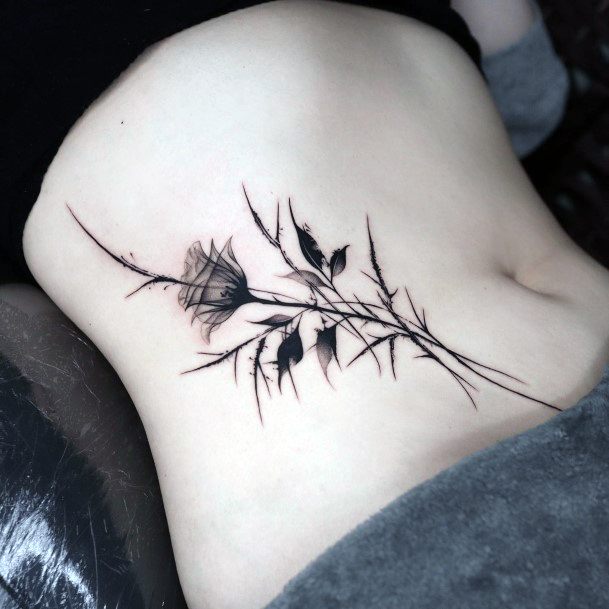
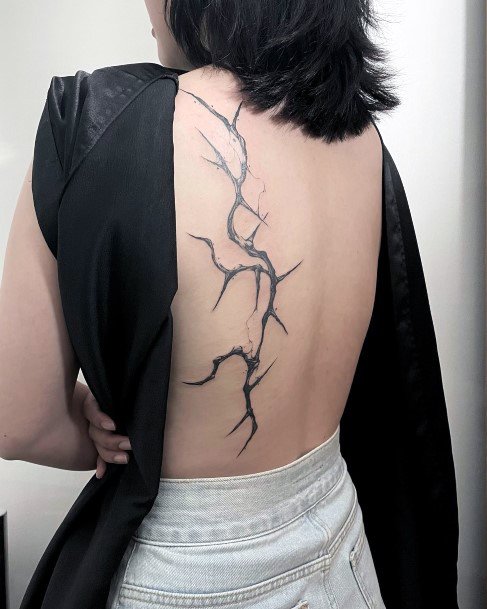


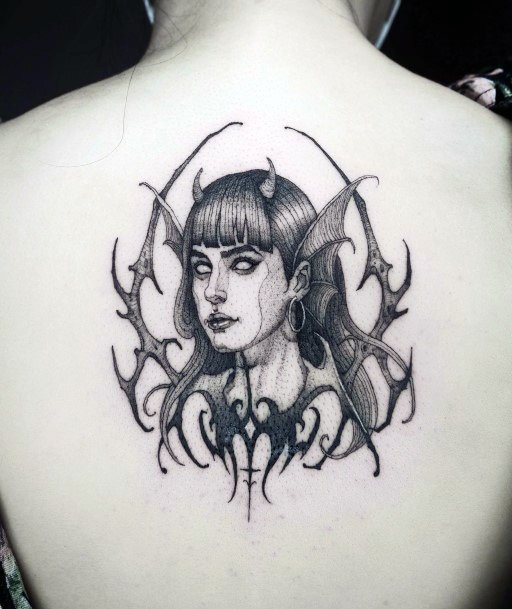
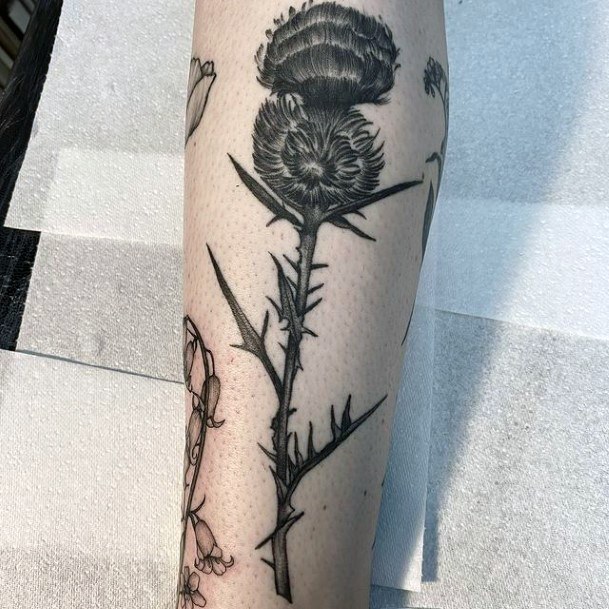






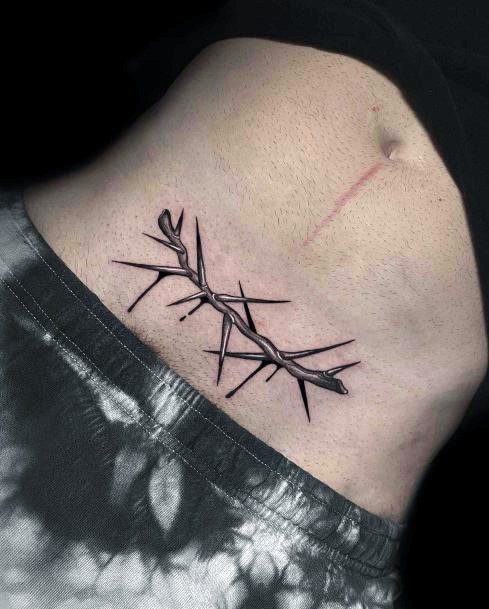

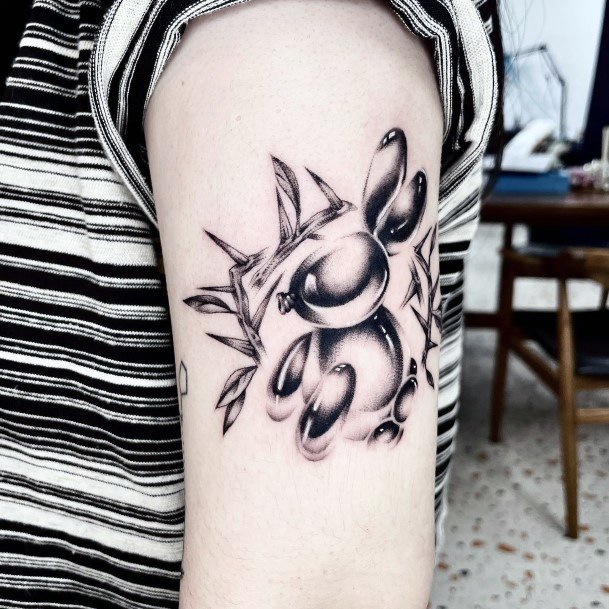
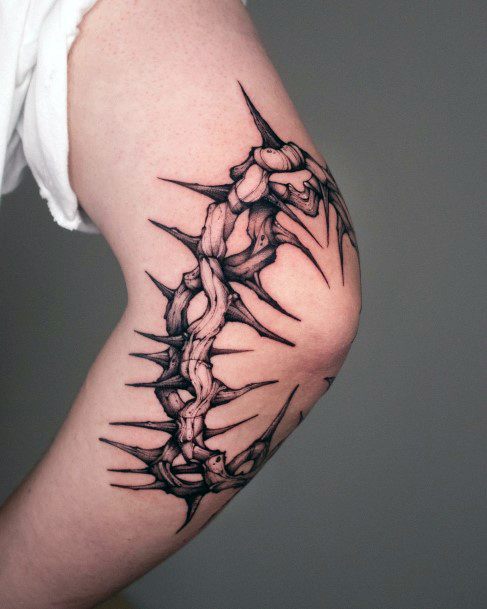


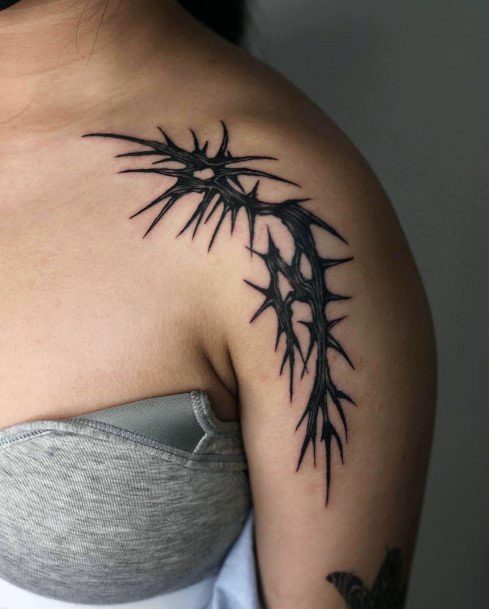

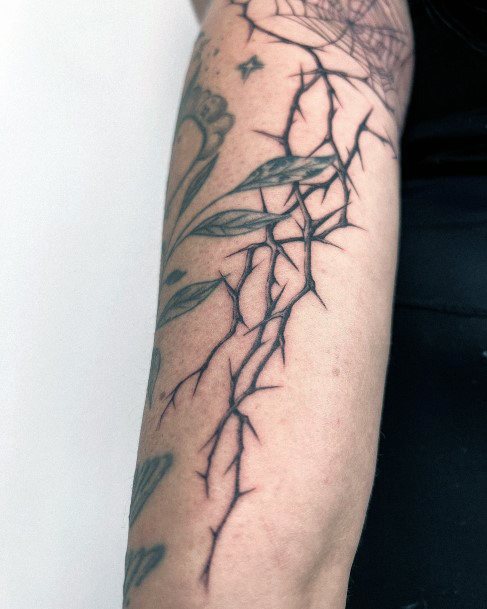


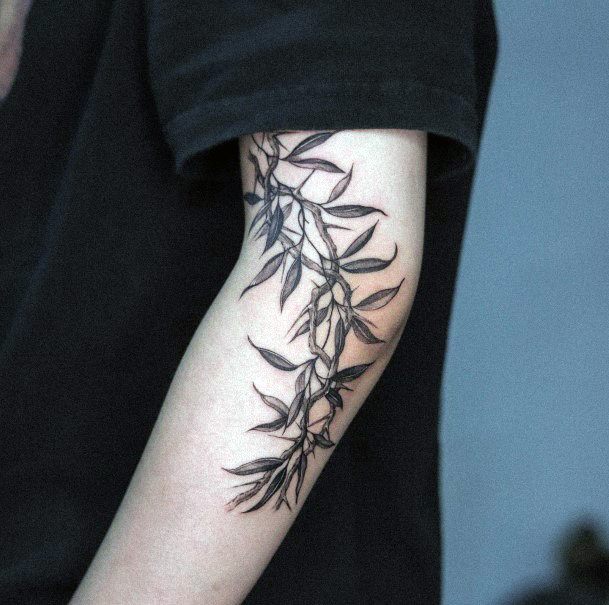



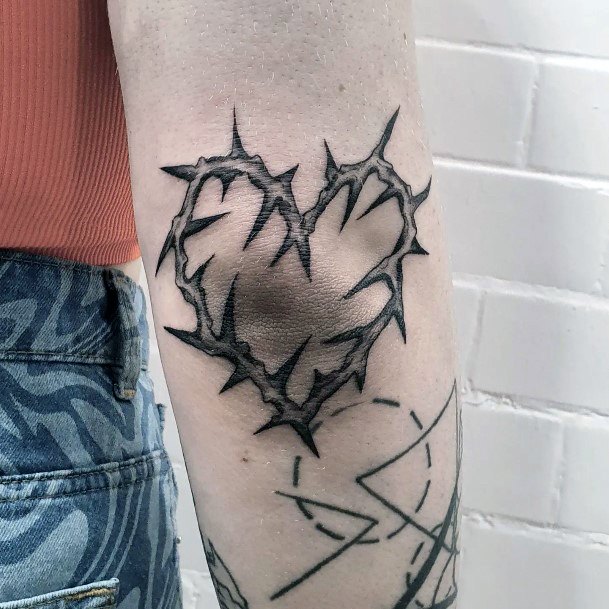
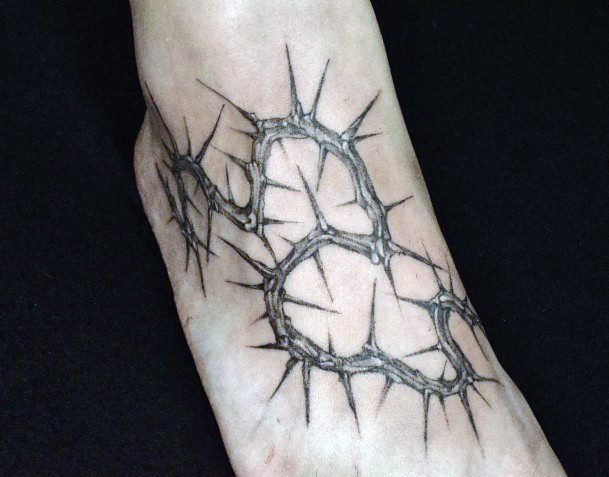
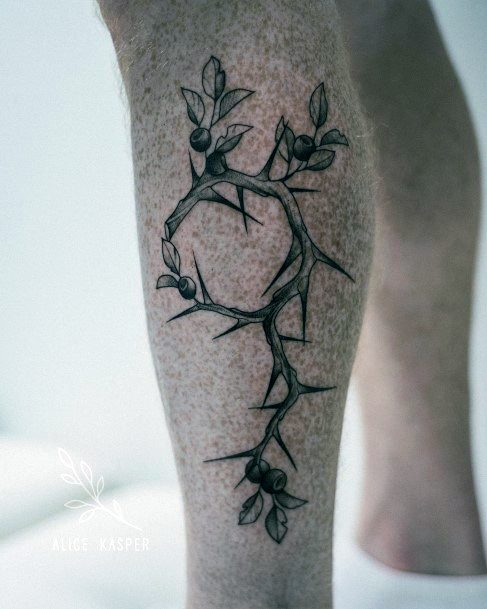



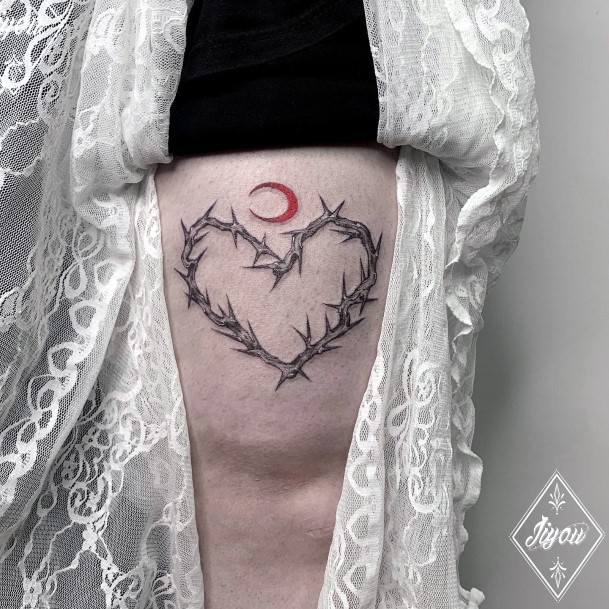
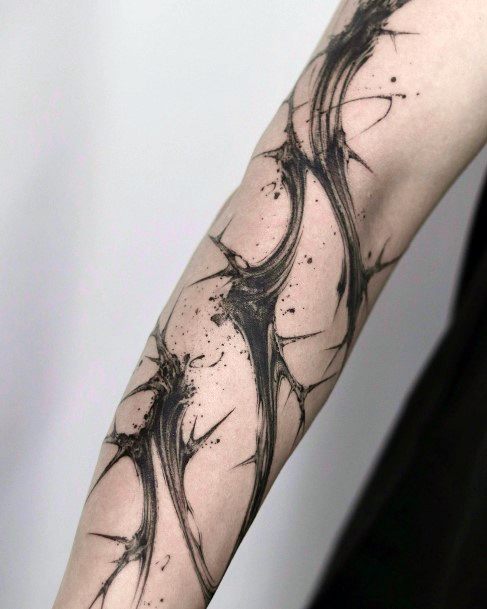

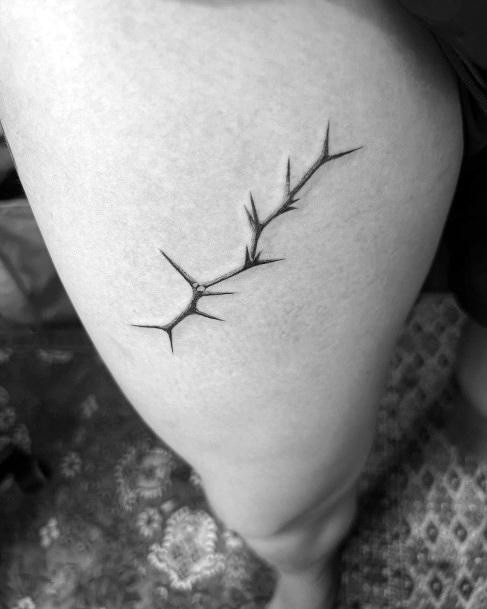
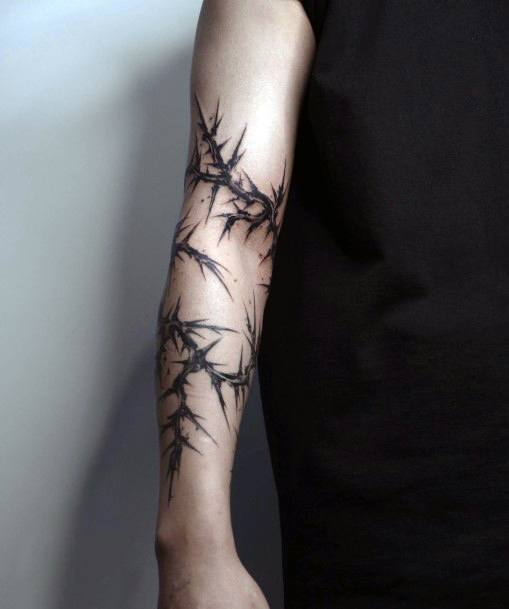


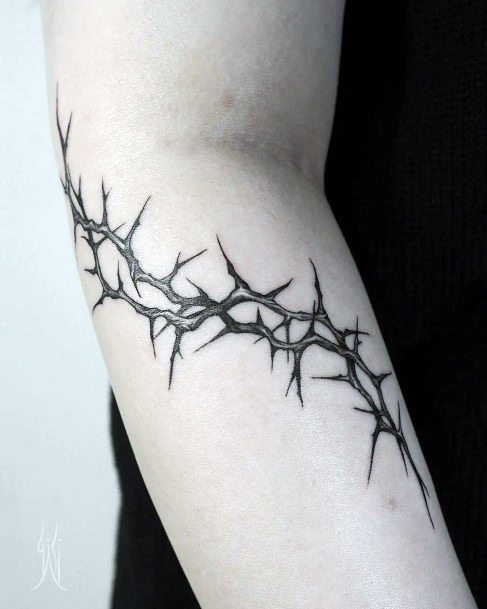
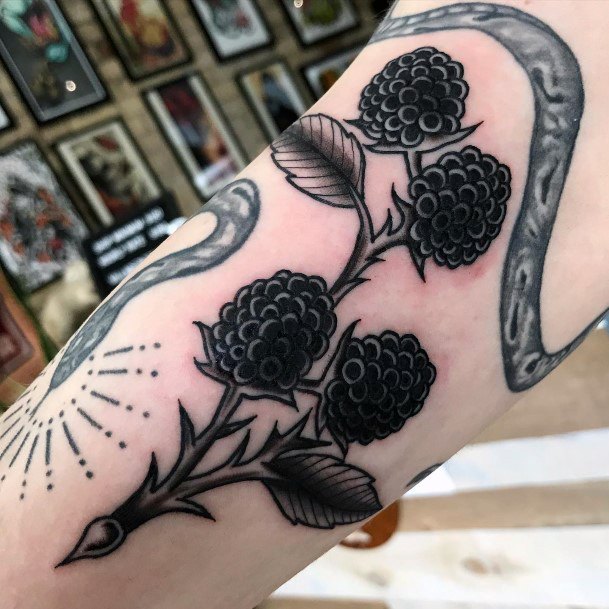
Thorn tattoo meanings and symbolism:
What do Thorn themed designs mean and symbolize?: Thorns have been used throughout history to represent many different meanings. They can be seen as a reminder of suffering and pain, but also as a reminder of strength and resilience in the face of adversity. They can also be seen as a symbol of protection or strength from gods or goddesses in mythology. They can be seen as an obstacle or difficulty that must be overcome in order to reach success or redemption in literature or art. No matter what interpretation is given to it, the symbolism of the thorn remains powerful and timeless.
The most common interpretation of the thorn is that it symbolizes protection, strength, and resilience. This is because thorns are often seen as a natural defense against predators and other dangers. Thorns can also be seen as a reminder of the suffering and pain that can come with life, as well as a reminder of the strength and courage needed to overcome adversity.
The symbolism of the thorn has been used in many different cultures throughout history. In Christianity, the thorn is often associated with Jesus’ crown of thorns, which was placed on his head during his crucifixion. This symbolizes the suffering and pain that Jesus endured for the sake of humanity. In some cultures, the thorn is also seen as a symbol of protection and strength, as it can be used to ward off evil spirits or bad luck.
In literature, thorns are often used to represent obstacles or difficulties that must be overcome in order to reach a goal or achieve success. For example, in the classic novel The Scarlet Letter by Nathaniel Hawthorne, the protagonist Hester Prynne must overcome many obstacles in order to find redemption and acceptance in her Puritan society. The scarlet letter she wears on her chest is a symbol of her sin, but it also serves as a reminder of her strength and resilience in the face of adversity.
In mythology, thorns are often associated with gods and goddesses who are associated with protection and strength. In Greek mythology, Athena is often depicted wearing a crown of thorns to symbolize her strength and courage in battle. In Norse mythology, Thor is often depicted wearing a belt made of thorns to symbolize his power and protection over his people.
In art, thorns are often used to represent pain or suffering. For example, in the painting The Garden of Earthly Delights by Hieronymus Bosch, thorns are used to represent the suffering that comes with temptation and sin. In some works of art, thorns are also used to represent protection or strength.



